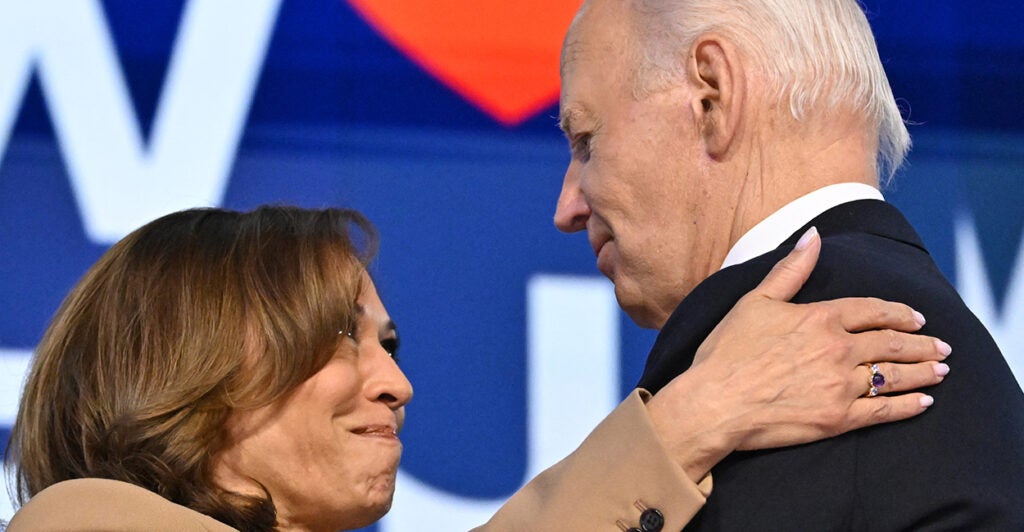Some ideas are like horror movie villains. They’re dangerous, and no matter how many times they’re defeated, they never seem to die.
The misguided idea of taxing unrealized capital gains is back on the scene. Sen. Ron Wyden, D-Ore., floated a proposal to tax unrealized capital gains in 2021.
It was widely debated in 2022, when Congress was considering a multitrillion-dollar tax and spending package.
Opposition from Sen. Joe Manchin, D-W.Va., to taxing income before it’s earned helped defeat the idea then.
But the idea was far from dead. President Joe Biden included a version of the tax in his latest budget.
Vice President Kamala Harris also has endorsed the idea.
The first step in killing a bad idea is to recognize it for the scourge it is.
A realized capital gain—which we currently tax—is the difference between the price you sold an asset for and the price you paid for it. An unrealized gain, on the other hand, is an estimate of what that difference would be if you had sold an asset that you still hold.
The difference between taxing realized capital gains and unrealized gains is the difference between the government taxing people on income they’ve actually received versus the government taxing them on income they might receive later.
It would give the government the first claim on income, taking a big slice before the supposed owner of the asset ever sees a penny.
In effect, it would turn property owners into property renters, with Uncle Sam as their landlord.
Consider how an unrealized capital gains tax would work if it was applied to housing. You would be taxed on the increase in the value of your house regardless of whether you sold it and received any income out of it.
If you bought a house for $300,000, and the value rose to $500,000 a couple years later, you could be stuck paying tax on the $200,000 of gain even as you’re struggling to make mortgage payments. At a 25% tax rate, it would cost you $50,000 in federal taxes.
It would be like having a second mortgage, but in some ways worse.
At least mortgage payments end after 30 years. But you would never finish paying off your unrealized capital gains tax payments, as long as you owned the asset and its value was increasing—even if that increase was only from inflation.
And unlike mortgages, which give homeowners clearly defined payment terms, unrealized capital gains tax payments would be unpredictable, rising or falling depending on the housing market, inflation, and subjective assessments of a house’s value.
Unrealized capital gains taxes on business assets wouldn’t be much better. The value of company stocks fluctuate wildly, year to year and even day to day. If a company’s stock price skyrocketed at the end of one year and then plummeted at the start of the next, its shareholders could face devastating capital gains taxes that they may have no way of paying—even if they were to sell their shares.
Unrealized capital gains are often—as the name suggests—not real. But the taxes on the phantom gains would be very real.
Under an unrealized capital gains tax, the federal government would exert its primacy over Americans’ investments, taking the first dividends on profitable endeavors. But although the government would reap the first rewards, individual investors and business owners would bear the risk of losses.
Taxing the unrealized gains from ownership in a small, closely held business would present many of the same challenges as taxing unrealized gains on corporate stock or on housing. And it would present unique challenges.
Stock prices may be used to estimate public companies’ prices, but an unrealized capital gains tax on small business assets would require administratively burdensome business valuations. Small business owners—with limited access to capital markets—would be especially ill-prepared to deal with sudden surges in taxes whenever the company’s estimated value rose. As soon as small businesses achieved some success, the government would slam them with new taxes and stop their momentum.
Those in Washington who propose taxing unrealized capital gains generally include broad exemptions for certain asset classes and based on income or asset thresholds. These exceptions would give investors a path to escape from the tax, which is better than the alternative. The tax would have fewer direct victims as a result.
But the tax-induced capital flows still would wreak economic havoc—and without managing to raise much government revenue. So, the new tax would do little to satiate lawmakers’ appetite for more tax dollars.
And once a horror movie villain—or a bad idea—gets a foot in the door, it quickly can swing the door open wide and claim more victims. When the income tax was first implemented in 1913, it applied to less than 1% of the population, and most of those who paid it paid only a 1% rate. That small initial income tax spawned something far worse and more widespread over time.
Allowing the government to tax income that doesn’t exist sets an even more dangerous precedent.
Americans should slam the door on the idea of taxing unrealized capital gains, and lawmakers should kill the idea once and for all.
